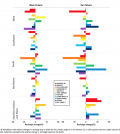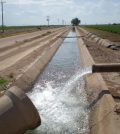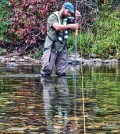Posts for tag "drought"
Utah’s Canyonlands Research Center: A Great Study Location for Climate Effects on Ecosystem Processes, Community Dynamics and More
Canyonlands Research Center provides a good site for drought studies and a working cattle ranch for research purposes.
- Posted August 21, 2019
Tracking Aquifer Water With Seismic Noise
New research indicates that seismic noise may be a game changing tool in tracking aquifer water health, especially in drought-sensitive areas.
- Posted December 5, 2018
Mapping Trends in Open Surface Water Bodies in the US
Mapped trends in open surface water bodies in the contiguous US show that with climate change, dry regions will get drier, wet regions will get wetter.
- Posted May 16, 2018
Baking in the Sun: How Groundwater Recharge is Likely to Change as the Climate Does
Research shows groundwater recharge in the Western US will change with the climate; dry areas will have less recharge, and wet regions will have more.
- Posted December 15, 2017
The Arizona Department of Environmental Quality’s Water Quality Division
In a naturally extreme climate, keeping water clean and safe in high enough quantities for a growing population can be a challenge.
- Posted November 17, 2017
Soil Moisture, Snowpack Data Could’ve Predicted 2012 Drought Sooner
Existing datasets on soil moisture and snowpack help scientists at the National Center for Atmospheric Research refine drought predictions.
- Posted November 9, 2016
Lake Powell Not Full Enough To Withstand Heavy Drought
Lake Powell is only about half filled nowadays and an extreme drought could very likely empty the lake, a modeling study finds.
- Posted September 29, 2016
Douglas Fir Trees Threatened By Increasing Droughts
University of California, Davis, scientists find that Douglas fir trees in the West are consistently affected by drought conditions.
- Posted September 15, 2016
Trees With Lowest Hydraulic Safety Margin Most Susceptible To Drought
Researchers find the most significant factors, like low hydraulic safety margin, that influence tree survival during drought.
- Posted May 3, 2016
Drought Conditions Impact Post-Fire Recovery Of Rocky Mountain Trees
While many tree species are well adapted to fire, recently Rocky Mountain trees have had more difficulty recovering from fire than in the past, according to a release from the University of Wisconsin-Madison. Scientists at the university...
- Posted April 11, 2016
Human Interference May Have Reduced Forests’ Ability To Withstand Drought
Americans have been trying to suppress U.S. forest fires since the 1940s through Smokey Bear and other fire-prevention programs. However, suppressing forest fires may have changed the compositions of forests from fire- and drought-resistant species to ones...
- Posted March 23, 2016
Droughts May Be New Normal For American Southwest
Scientists at the National Center for Atmospheric Research use 35 years’ worth of weather data to assess the American Southwest’s future of drought.
- Posted February 23, 2016
Four Billion People Affected By Scarcity Of Freshwater
The growing scarcity of freshwater resources is more and more perceived as a risk for people around the world, according to a new study led by researchers at the Netherlands’ University of Twente. In the work, they...
- Posted February 18, 2016
Report Details Impacts Of Drought In U.S.
Forests and grasslands in the United States can’t seem to escape the impacts of drought, according to a new report from the U.S. Forest Service. Scientists at Duke University helped to compile and edit the report, which...
- Posted February 11, 2016
Airborne Observatory Charts California Drought Effects
Scientists use the plane-mounted Carnegie Airborne Observatory to dissect California drought effects in the state’s forests.
- Posted February 2, 2016
With Drought, Some Western Trees Hunker Down While Others Give Up
U. of Washington scientists uncover the different ways that aspen and ponderosa pine trees respond to drought conditions in the San Juan National Forest.
- Posted December 16, 2015
Managed Aquifer Recharge One Possible New Tool For Drought-Ridden California
Scientists at University of California, Santa Cruz, investigate managed aquifer recharge, a new tool to help California deal with drought.
- Posted December 15, 2015
Middle East Sediment Cores Show Downfall Of Empires Linked To Drought
A study of sediment cores taken near the Tigris and Euphrates Rivers reveals drought periods coincide with major transitions between ruling empires.
- Posted October 6, 2015
Why Concurrent Droughts And Heat Waves Are Increasing
Concurrent droughts and heat waves could shape our climate future. A new study reveals how quickly changes have come in the past 50 years.
- Posted September 29, 2015
Data From Western Streams Will Aid Understanding Of Drought Vulnerability
Scientists with the U.S. Geological Survey are gathering data on streams in Idaho and five other western states to assess drought vulnerability.
- Posted September 21, 2015






















